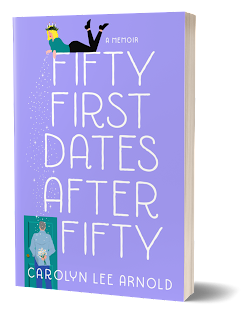 The search for love has no age limit — at 50, it may be just the beginning
The search for love has no age limit — at 50, it may be just the beginning
OAKLAND, Calif. – The modern-day dating world can feel tedious, but what if it didn’t have to be? What if instead you turned your search for love into a sexy, fun social experiment? Author and researcher Carolyn Lee Arnold does just that in her debut memoir, “Fifty First Dates After Fifty,” (Nov. 2, 2021, She Writes Press).
After Arnold, a free-spirited, 50-something longing for a life partner, breaks up with her non-committal Buddhist boyfriend (and holds a “letting go” ceremony to seal the deal), she challenges herself to go on 50 first dates during her search for a monogamous life partner. Set in the Bay Area world of personal growth workshops and spiritual ceremonies, this revealing memoir traces the adventurous path of Arnold’s universal quest for love. The goal of 50 dates with 50 different partners pulls her forward through the highs and lows of dating — magical and ecstatic, pining and painful — while her heart soars, falls and keeps on going. Buoyed by her dating project, she avoids settling for the wrong guy and discovers the type of man she wants.
Erotic in places, funny in others, this upbeat memoir about the search for a partner at midlife is a celebration of one woman’s unabashed sexuality. Join Arnold on terrible dates, great dates and everything in between as you follow her midlife journey of self-discovery and self-love along the way to finding Mr. Right.
“Carolyn’s story of dating resilience and persistence shows us that finding a deep love is possible at every age.” — Sasha Cagen, author of “Quirkyalone”
“Fifty First Dates After Fifty: A Memoir”
Carolyn Lee Arnold | Nov. 2, 2021 | She Writes Press | Memoir
Paperback | 978-1647422110 | $16.95 | Ebook | 978-1647422127 | $9.95
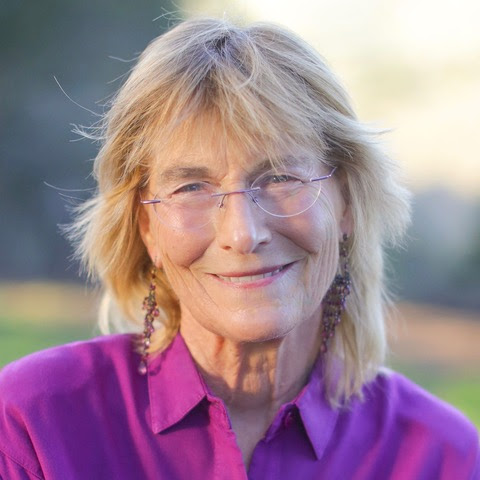 CAROLYN LEE ARNOLD drew upon her 30 years as a social science researcher and 10 years as a relationship workshop assistant to create the dating project in “Fifty First Dates after Fifty.” A native Californian from Los Angeles with a New England education, Arnold found her true home in the San Francisco Bay Area, where she prepared for dating and life by attending spiritual ceremonies, working in free clinics, leading women’s backpacking trips, hiking the local green hills, identifying as a lesbian-feminist in the 1970s and ’80s, and earning graduate degrees in women’s studies, statistics and educational research. “Fifty First Dates after Fifty” is her first book, and excerpts have been published in Persimmon Tree, Outside In Literary & Travel Magazine, and the Human Awareness Institute’s Enlighten Journal. An excerpt from her second memoir, about her lesbian-feminist years, has been published in Noyo River Review. Still a feminist, she lives in the Bay Area with her partner — one of her 50 dates. For more information, including dating resources, visit carolynleearnold.com/.
CAROLYN LEE ARNOLD drew upon her 30 years as a social science researcher and 10 years as a relationship workshop assistant to create the dating project in “Fifty First Dates after Fifty.” A native Californian from Los Angeles with a New England education, Arnold found her true home in the San Francisco Bay Area, where she prepared for dating and life by attending spiritual ceremonies, working in free clinics, leading women’s backpacking trips, hiking the local green hills, identifying as a lesbian-feminist in the 1970s and ’80s, and earning graduate degrees in women’s studies, statistics and educational research. “Fifty First Dates after Fifty” is her first book, and excerpts have been published in Persimmon Tree, Outside In Literary & Travel Magazine, and the Human Awareness Institute’s Enlighten Journal. An excerpt from her second memoir, about her lesbian-feminist years, has been published in Noyo River Review. Still a feminist, she lives in the Bay Area with her partner — one of her 50 dates. For more information, including dating resources, visit carolynleearnold.com/.
Follow Carolyn Lee Arnold on Instagram @carolyn.lee.arnold
and Facebook @CarolynLeeArnoldAuthor
Praise for Carolyn Lee Arnold:
“This is no mere memoir but a handbook on how to date the adult way. By reading Arnold’s entertaining and upbeat story of voracious exploration, Generation X, Y and Z can learn everything no one ever taught them about effective communication, self-care, emotional responsibility and joyful sexual freedom. If dating is in your future, this inspirational book is for you.”
Robin Rinaldi, author of “The Wild Oats Project”
“This book will have great appeal to other seekers — men and women — especially those who are older or long for a deep sensual connection to others. Carolyn is such a role model for other middle-aged women — unafraid, unabashedly sensual and assertive. I love how brave and brazen she is!”
Julia Scheeres, New York Times best-selling author of “Jesus Land”
“Carolyn boldly shares the raw vulnerabilities of being a person truly living life on her own terms.
You’ll be rooting for Carolyn all the way through as she tries, fails, feels, picks herself up,
dusts herself off and courageously moves forward into her next new adventure. …
I was hooked at the prologue. You will be too.”
Wendy Newman, author of “121 First Dates”
“Carolyn Arnold’s dating stories in ‘Fifty First Dates After Fifty’ will be inspiring for any woman who worries that life has passed her by and that it’s too late to attract a life partner. There will be bad dates, broken hearts and dashed expectations — and some hot fun along the way.”
Sasha Cagen, feminist life coach and author of “Quirkyalone”
In an interview, Carolyn Lee Arnold can discuss:
- How to avoid dating pitfalls and learn to date the adult way — with effective communication, self-care, emotional responsibility and joyful sexual freedom
- Embracing sexuality and empowering others to open more sex-positive dialogues
- How women can have control over their own bodies and reject traditional gender roles
- The need to integrate more conversations about sex and sexuality into our daily lives
- Rejecting the internal pressure to settle and trusting that you can find Mr. Right at any age
- Insight into the different types of dating and dating communication, including dating someone with a large age gap and openly discussing sex and sexual preferences
- The vast array of relationships, including monogamous, polyamorous and open relationships
- Learning about and tapping into emotional intimacy
- The Human Awareness Institute’s heart-centered approach to dating and relationships
An interview with Carolyn Lee Arnold
What made you want to write down your experiences and share them with the world?
In my late 50s, I set a goal of dating 50 men in order to find the right partner for me. As I proceeded through my “Fifty First Dates Project,” I noticed that while I was thoroughly enjoying dating, many women my age were feeling discouraged by their dating experiences. So I wanted to offer my approach and experiences as models and inspirations for other women. Also, I found that right partner, so I wanted to offer hope to older women that they could find their mate in later years.
How did setting a goal of 50 dates make dating more enjoyable?
Setting a goal of 50 dates and framing my dating as a research project gave me forward momentum and objectivity that took the weight off each date to be “the one.” Knowing that I could move on to the next date helped me evaluate each date based on how I felt about myself, how I felt about the man, and how I felt about our interactions. I could enjoy the man I was with without so much pressure. If we didn’t seem like a match, either from his or my perspective, it was not a big tragedy—just more information on the way to finding the right partner. And I could look forward to the next date.
You went on a lot of different dates. What was your most painful dating experience?
I dated a small business owner who said he wasn’t in a financial position to date and that he didn’t want to be sexual unless we were monogamous. I ignored both statements because I saw his potential as a partner, and then I watched as he ignored his own boundaries by continuing to date me and becoming sexual when I was still seeing others. By then, I was sure we were on the way to becoming partners, so I was surprised when he suddenly pulled back, saying he could not be partners or lovers with me. It was very painful because my hopes for a partner had been raised by my fantasy and his actions.
What about your most wild or magical dating experience?
One of my most wild dates was accompanying date number 9, who was my lover, to a New Year’s Eve party. He suggested that we might want to “play” with another couple there, i.e. have sex with them, and it turned out that I already knew and liked the woman and was instantly attracted to the man. We ended up setting up a cozy sleeping nest in the basement and stayed up late having a safe sex discussion. But by the time we finished we were too tired to do anything, so we slept and then made love to each other in the morning. That man ended up being date number 10 and my model of an ideal partner.
My most magical date was being led on a path up a backyard slope to a candlelight hut playing angelic music. It felt like a hillside house out of “Lord of the Rings.” This man, who danced in an African dance troupe, had also prepared an exotic dinner served in a room filled with African masks and statues, accompanied by stirring world music, so the whole evening felt otherworldly.
Why didn’t you think polyamory would work for you? What made you want to search for a monogamous relationship?
I didn’t think that polyamory would work for me because I wanted to be my man’s main focus, emotionally and sexually, and I wanted him to be mine. I had been in short monogamous relationships and I loved monogamy — the emotional security of knowing that you would both bring all your emotional and sexual energy to each other and not get distracted by others. I tried a short polyamorous relationship at a summer retreat, and although I loved the freedom my partner gave to me, I could not imagine being emotionally secure enough to give my partner the same. Plus, I was a busy professional: I didn’t have the time I knew it would take to process the painful bumps along the way to a successful polyamorous relationship.
Do any of the men you’ve dated know they are in the book? How do they feel about it?
Many of the men I dated knew that they were part of a dating project with a goal of 50, as I would tell them about the project if we had more than a few dates. I wrote the book after I finished the project, and when it was done, I contacted the men who were the major dates to see if they wanted to read their chapter and make sure that their privacy was protected. I had changed all their names and many personal characteristics. All those who read their chapter approved of how I disguised them. They were overwhelmingly positive about what I had written — either flattered about what I said about them or impressed with my honesty about our interactions—and supportive of my publishing it. Some even wanted their real names used!
What is the best piece of dating advice you can give to those who are single and searching for what you have found?
My overall dating advice is to increase your ability to love yourself and develop an awareness of what you have to offer as a partner. The way to do that is to build up your support network: friends, women’s or men’s groups, personal growth workshops, and communities of people with your shared interests, values and beliefs. Surround yourself with people who love and appreciate you — as a single or partnered person — and do the inside work to love yourself as much as they love you. That will attract someone who loves and appreciates you that same way. And remember, you only need one!
What are you working on next?
I’m working on a memoir about the 18 years I spent identifying as a lesbian, from my mid-20s to my early 40s. It starts with my first attractions to women and includes my decision to declare myself a lesbian, my years in the Berkeley and San Francisco lesbian-feminist community of the 1970s and ’80s, my decision to go back to dating men, and why that process took 18 years. This period of my life is alluded to in “Fifty First Dates after Fifty,” and I realized that it deserves its own book.

A former award-winning journalist with national exposure, Marissa now oversees the day-to-day operation of the Books Forward author branding and book marketing firm, along with our indie publishing support sister company Books Fluent.
Born and bred in Louisiana, currently living in New Orleans, she has lived and developed a strong base for our company and authors in Chicago and Nashville. Her journalism work has appeared in USA Today, National Geographic and other major publications. She is now interviewed by media on best practices for book marketing.
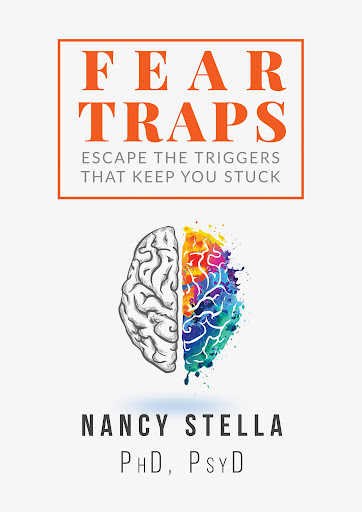 Dr. Nancy Stella transcends traditional therapeutic approaches in a new guide to living the life you want
Dr. Nancy Stella transcends traditional therapeutic approaches in a new guide to living the life you want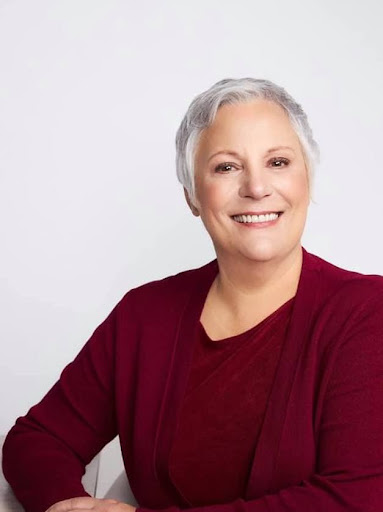 About the Author
About the Author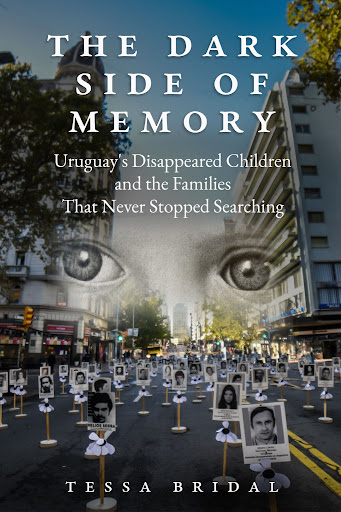 Award-winning author Tessa Bridal was born and raised in Uruguay, leaving with her family when she was 20. Now, she returns to chronicle the stories of those who disappeared during the country’s political turmoil — following the stories of families, their loss and their resilience in her new book, “The Dark Side of Memory” (Oct. 26, 2021, Invisible Ink).
Award-winning author Tessa Bridal was born and raised in Uruguay, leaving with her family when she was 20. Now, she returns to chronicle the stories of those who disappeared during the country’s political turmoil — following the stories of families, their loss and their resilience in her new book, “The Dark Side of Memory” (Oct. 26, 2021, Invisible Ink).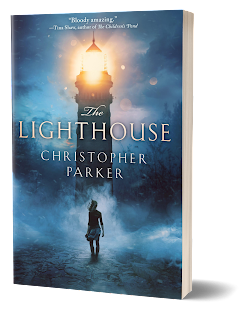 Auckland, NZ – After spending nearly 10 years writing, editing, and dreaming, Christopher Parker is making his authorial debut with a page-turning book flowing with love, suspense, mystery, and whimsy. Originating from a short story he created as a child, the result of Parker’s decadelong mission to produce the book has come to fruition with “The Lighthouse” (Oct. 26, 2021, Beacon Press Limited).
Auckland, NZ – After spending nearly 10 years writing, editing, and dreaming, Christopher Parker is making his authorial debut with a page-turning book flowing with love, suspense, mystery, and whimsy. Originating from a short story he created as a child, the result of Parker’s decadelong mission to produce the book has come to fruition with “The Lighthouse” (Oct. 26, 2021, Beacon Press Limited).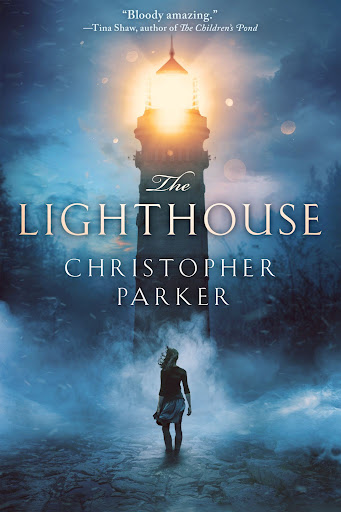 Something strange is happening in Seabrook. The town’s lighthouse–dormant for over thirty years and famously haunted–has inexplicably started shining, and its mysterious glow is sparking feverish gossip throughout the spooked community.
Something strange is happening in Seabrook. The town’s lighthouse–dormant for over thirty years and famously haunted–has inexplicably started shining, and its mysterious glow is sparking feverish gossip throughout the spooked community.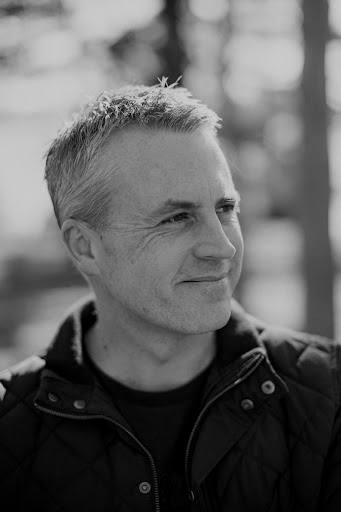 “Bloody amazing … ‘The Lighthouse’ will have you laughing then weeping.
“Bloody amazing … ‘The Lighthouse’ will have you laughing then weeping.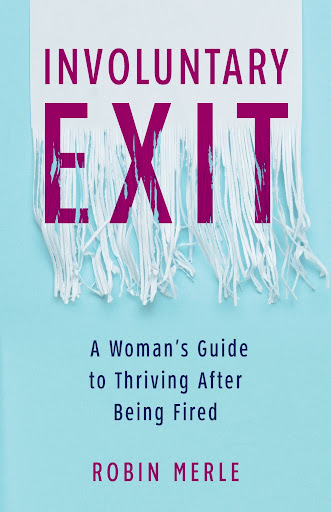 New York, NY – A quick-witted and fast-paced self-help book from debut author and rainmaker, Robin Merle, dives into the emotional trauma of women whose job loss wasn’t part of the original plan. Involuntary Exit: A Woman’s Guide to Thriving After Being Fired (She Writes Press, Oct. 19, 2021) is about moving forward, illustrated by women’s remarkable stories of pain, progress, and purpose as they chart their own journey to more meaningful success.
New York, NY – A quick-witted and fast-paced self-help book from debut author and rainmaker, Robin Merle, dives into the emotional trauma of women whose job loss wasn’t part of the original plan. Involuntary Exit: A Woman’s Guide to Thriving After Being Fired (She Writes Press, Oct. 19, 2021) is about moving forward, illustrated by women’s remarkable stories of pain, progress, and purpose as they chart their own journey to more meaningful success. Robin Merle has been a senior executive for billion-dollar organizations. She is a veteran of the power, value, and identity wars at the top ranks; has raised more than a half-billion dollars in philanthropy during her decades working with nonprofit organizations; has served as a board member for three nonprofits in New York City; and has been the vice chair of National Philanthropy Day in New York for three consecutive years. In 2017, she was named Woman of Achievement by Women In Development (WID) for her leadership in fundraising and commitment to women in the field. Robin is a frequent speaker at national conferences on fundraising and leadership. Her short fiction has been published in various literary magazines. Involuntary Exit is her first nonfiction book. Robin splits her time between New York City and North Conway, New Hampshire and Maine. You can find Robin Merle at her website:
Robin Merle has been a senior executive for billion-dollar organizations. She is a veteran of the power, value, and identity wars at the top ranks; has raised more than a half-billion dollars in philanthropy during her decades working with nonprofit organizations; has served as a board member for three nonprofits in New York City; and has been the vice chair of National Philanthropy Day in New York for three consecutive years. In 2017, she was named Woman of Achievement by Women In Development (WID) for her leadership in fundraising and commitment to women in the field. Robin is a frequent speaker at national conferences on fundraising and leadership. Her short fiction has been published in various literary magazines. Involuntary Exit is her first nonfiction book. Robin splits her time between New York City and North Conway, New Hampshire and Maine. You can find Robin Merle at her website: 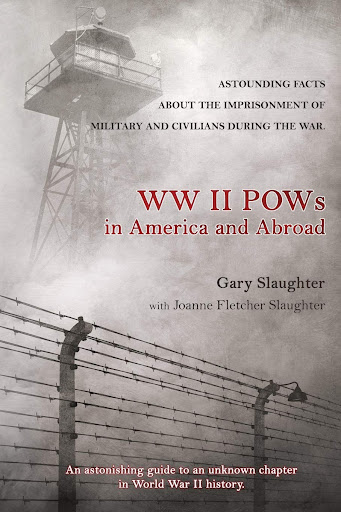 NASHVILLE, Tenn. – In his latest work, award-winning author and military veteran Gary Slaughter documents perspectives of World War II that have flown under the radar for decades. Fletcher House Publishers will release “WWII POWs in America and Abroad” on Nov. 11, 2021.
NASHVILLE, Tenn. – In his latest work, award-winning author and military veteran Gary Slaughter documents perspectives of World War II that have flown under the radar for decades. Fletcher House Publishers will release “WWII POWs in America and Abroad” on Nov. 11, 2021.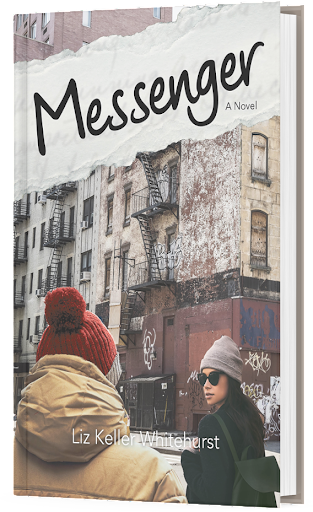 Richmond, VA — Author Liz Keller Whitehurst first released her inspirational debut novel, Messenger (Warren Publishing, Oct. 19, 2021), as a riveting 16 episode podcast series in 2020, the timing perfect amid the pandemic that had many people searching for encouraging messages to hang on to.
Richmond, VA — Author Liz Keller Whitehurst first released her inspirational debut novel, Messenger (Warren Publishing, Oct. 19, 2021), as a riveting 16 episode podcast series in 2020, the timing perfect amid the pandemic that had many people searching for encouraging messages to hang on to.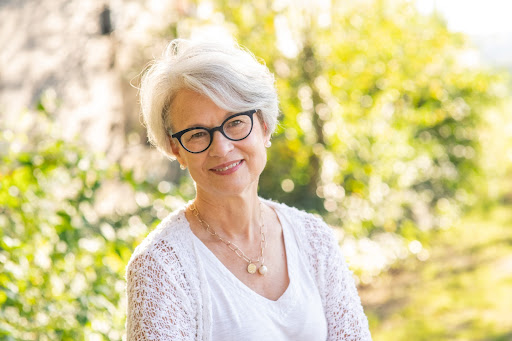 Liz Keller Whitehurst is the author of the forthcoming debut novel, Messenger, and author/creator of the serial podcast MESSENGER: A NOVEL IN 16 EPISODES, which she launched in 2020. Her short stories have appeared in many literary magazines and journals, including Gargoyle, The Portland Review, Five Fingers Review and Nimrod International Journal. She was a finalist in Nimrod International Journal’s Short Story Competition. She earned an MA in English from The University of Virginia. In addition to fiction writing, Liz has spent her professional life writing and teaching. She’s done corporate, non-profit and freelance writing and has taught English and writing at Virginia Commonwealth University, University of Richmond and J. Sargeant Reynolds Community College. Her last teaching post was co-leading a memoir writing class at the city jail. Though born in Ohio, Liz grew up in Winchester, Virginia and has lived her adult life in Richmond, Virginia. She shares her current 1891 home, located in one of Richmond’s oldest neighborhoods, with her husband. Her second-floor writing desk overlooks the James River.
Liz Keller Whitehurst is the author of the forthcoming debut novel, Messenger, and author/creator of the serial podcast MESSENGER: A NOVEL IN 16 EPISODES, which she launched in 2020. Her short stories have appeared in many literary magazines and journals, including Gargoyle, The Portland Review, Five Fingers Review and Nimrod International Journal. She was a finalist in Nimrod International Journal’s Short Story Competition. She earned an MA in English from The University of Virginia. In addition to fiction writing, Liz has spent her professional life writing and teaching. She’s done corporate, non-profit and freelance writing and has taught English and writing at Virginia Commonwealth University, University of Richmond and J. Sargeant Reynolds Community College. Her last teaching post was co-leading a memoir writing class at the city jail. Though born in Ohio, Liz grew up in Winchester, Virginia and has lived her adult life in Richmond, Virginia. She shares her current 1891 home, located in one of Richmond’s oldest neighborhoods, with her husband. Her second-floor writing desk overlooks the James River. Camden, Maine – There are many ways to give back, from volunteering, serving on a board, raising funds, or donating time. Each role requires a specific skill set, but where does a person turn to get started? There has never been a formal guide for volunteers and activists to help them navigate the day-to-day activities associated with doing good through philanthropy; until now! So skip scrolling on the internet for hours to figure out how to advance the cause dear to your heart, and use this shortcut guide! “For A Good Cause” (She Writes Press, Oct. 12, 2021) by philanthropy expert philanthropist Diane Lebson is for anyone who has ever said to themselves, “If I could make a difference in the world, how would I want to do it?”
Camden, Maine – There are many ways to give back, from volunteering, serving on a board, raising funds, or donating time. Each role requires a specific skill set, but where does a person turn to get started? There has never been a formal guide for volunteers and activists to help them navigate the day-to-day activities associated with doing good through philanthropy; until now! So skip scrolling on the internet for hours to figure out how to advance the cause dear to your heart, and use this shortcut guide! “For A Good Cause” (She Writes Press, Oct. 12, 2021) by philanthropy expert philanthropist Diane Lebson is for anyone who has ever said to themselves, “If I could make a difference in the world, how would I want to do it?” Diane Lebson: Diane grew up as a first-generation American in Milford, Connecticut, the daughter of working-class, Polish immigrants who instilled in her a strong work ethic and desire to “do good.” After studying international relations in college, Diane stayed in Washington and began her nonprofit career on the national staff of United Way, the largest charity in the United States. Over the course of seventeen years, she managed United Way’s national literacy program, directed the national board of trustees, and built a women’s giving program that has to date raised over $2 billion and mobilized over 70,000 philanthropists. After leaving United Way, she went on to lead US fundraising operations for an international nongovernmental organization that serves orphans and abandoned children, lead a public library foundation, serve as the Chief of Protocol at the US Embassy in Canberra, Australia, and oversee the women’s giving program for the American Red Cross. In 2018, she and her husband cofounded Evergreen Philanthropic Solutions, a national consultancy that helps nonprofit organizations, individuals, corporations, and foundations achieve their philanthropic goals. For more about Diane, please visit Evergreen’s website at
Diane Lebson: Diane grew up as a first-generation American in Milford, Connecticut, the daughter of working-class, Polish immigrants who instilled in her a strong work ethic and desire to “do good.” After studying international relations in college, Diane stayed in Washington and began her nonprofit career on the national staff of United Way, the largest charity in the United States. Over the course of seventeen years, she managed United Way’s national literacy program, directed the national board of trustees, and built a women’s giving program that has to date raised over $2 billion and mobilized over 70,000 philanthropists. After leaving United Way, she went on to lead US fundraising operations for an international nongovernmental organization that serves orphans and abandoned children, lead a public library foundation, serve as the Chief of Protocol at the US Embassy in Canberra, Australia, and oversee the women’s giving program for the American Red Cross. In 2018, she and her husband cofounded Evergreen Philanthropic Solutions, a national consultancy that helps nonprofit organizations, individuals, corporations, and foundations achieve their philanthropic goals. For more about Diane, please visit Evergreen’s website at 
 GARDEN CITY, NY – Psychotherapist and writer Linda Feyder’s upcoming evocative short fiction collection, “All’s Fair and Other California Stories” (Sept. 28, 2021, She Writes Press), transports the reader into brief, but telling moments in each character’s lives around different California landscapes. This psychological exploration ruminates over the desire for human connection and a better way of life despite challenging experiences.
GARDEN CITY, NY – Psychotherapist and writer Linda Feyder’s upcoming evocative short fiction collection, “All’s Fair and Other California Stories” (Sept. 28, 2021, She Writes Press), transports the reader into brief, but telling moments in each character’s lives around different California landscapes. This psychological exploration ruminates over the desire for human connection and a better way of life despite challenging experiences. LINDA FEYDER is a practicing psychotherapist in New York. She has been writing fiction for many years and her stories have appeared in literary journals and magazines. She sees her love for the human narrative as the drive behind both of her professions. Born in California, her interest in the state and the people it attracts are the subject of her debut collection of short stories. She earned her MA in Literature and Creative Writing from the University of Houston and her MSW from New York University. She lives in Long Island with her husband and enjoys traveling to different locales.
LINDA FEYDER is a practicing psychotherapist in New York. She has been writing fiction for many years and her stories have appeared in literary journals and magazines. She sees her love for the human narrative as the drive behind both of her professions. Born in California, her interest in the state and the people it attracts are the subject of her debut collection of short stories. She earned her MA in Literature and Creative Writing from the University of Houston and her MSW from New York University. She lives in Long Island with her husband and enjoys traveling to different locales.
